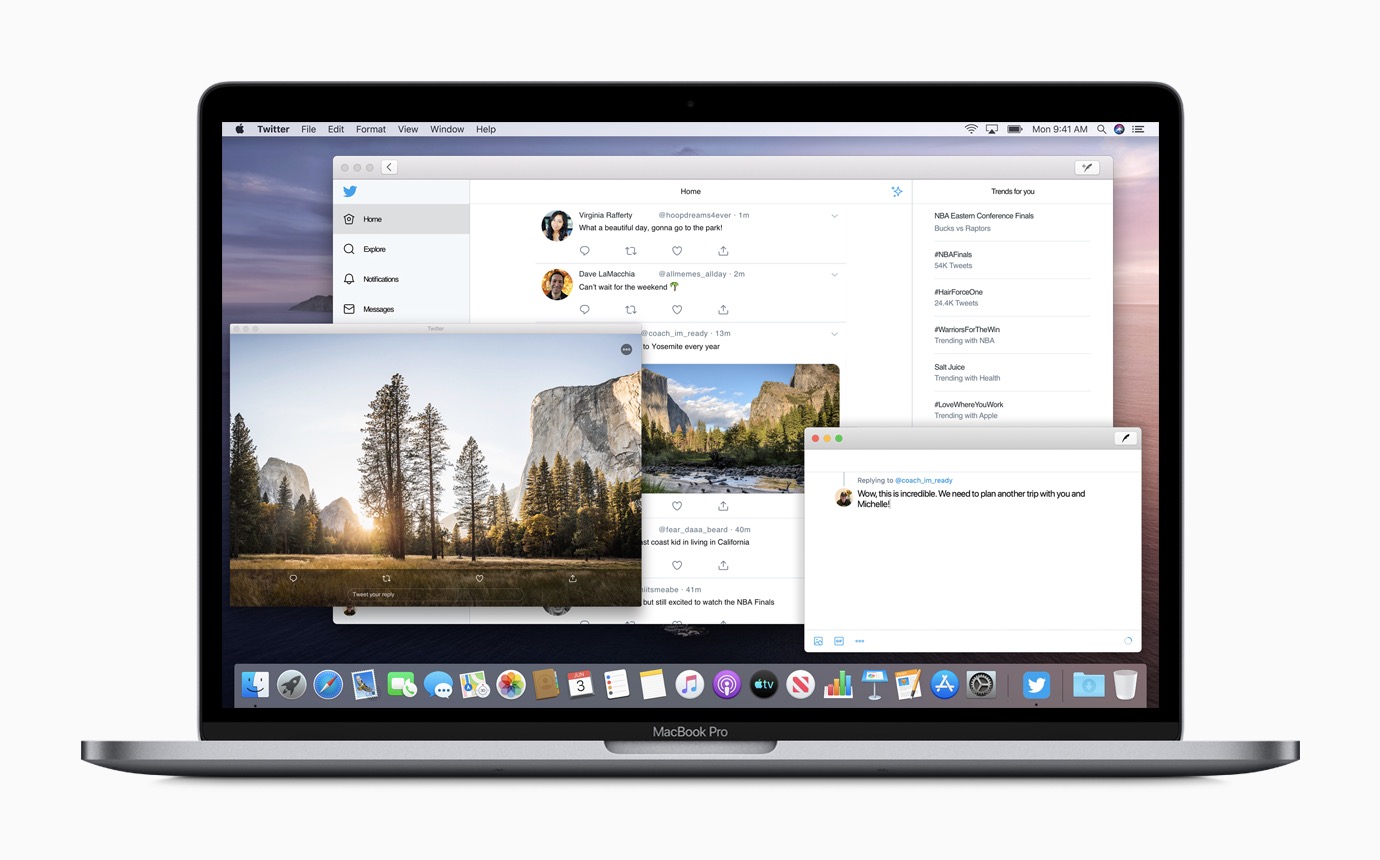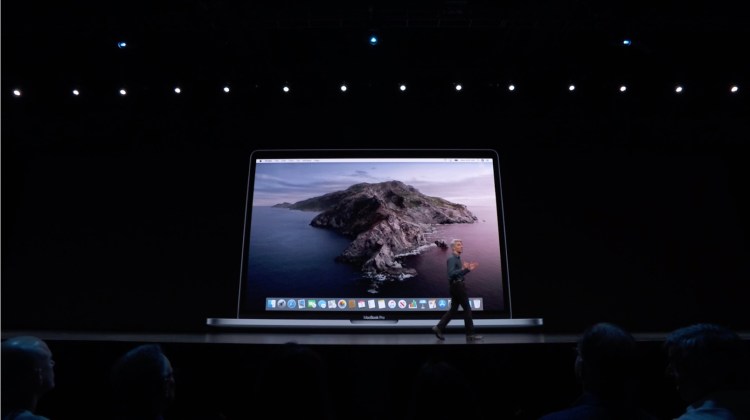Apple’s Mac computer lineup might look much the same as it did several years ago, but macOS — the operating system underlying all those machines — has been slowly but surely evolving to become more like iOS for iPads and iPhones. That process continues today with the announcement of macOS Catalina, aka macOS 10.15, at Apple’s 2019 WWDC in San Jose.
Catalina notably marks the end of iTunes, the media player and library manager that fueled the early growth of iPods, iPhones, and iPads. As was rumored in the weeks prior to WWDC, iTunes is giving way to separate Music, Podcasts, and TV apps similar to previously released iPad versions. Users will still have access to key iTunes synchronization features, now located within the macOS Finder itself.
Two of Catalina’s other tentpole features are wholly new: Sidecar is a previously disclosed feature that will enable the Mac to use an iPad with Apple Pencil as a secondary display for apps such as Final Cut Pro X and Adobe Illustrator. Voice Control is an accessibility feature that enables the Mac to be controlled using voice commands — something that will also be included in the new versions of iOS and iPadOS. The device usage monitoring tool Screen Time is being brought from iOS to the Mac, and synchronizes between more devices.

June 5th: The AI Audit in NYC
Join us next week in NYC to engage with top executive leaders, delving into strategies for auditing AI models to ensure fairness, optimal performance, and ethical compliance across diverse organizations. Secure your attendance for this exclusive invite-only event.
The biggest change in macOS 10.15 was telegraphed a year and a half ago, referenced at last year’s WWDC, and more recently segmented into stages: Apple is bringing third-party iOS apps to the Mac, starting with iPad apps. In macOS 10.14, Apple tested the process internally by porting iPad apps such as Stocks, News, and Home to the Mac; now third-party iPad apps will be able to get in on the action as well. Previously codenamed Marzipan, this feature will now be called Catalyst.
For developers, this will eventually mean less development time to produce apps that run on both platforms, as well as a unified App Store that offers combined macOS, iPadOS, and iOS binaries. Thanks to a library of over a million existing iPad apps, Mac users accustomed to a moribund Mac App Store will get the benefit of plenty of additional software that can run with small UI tweaks on their desktop and laptop machines.
Registered developers should expect to get their hands on the macOS Catalina beta later today, using Apple’s Developer Center. An initial public beta of the new OS typically will follow between one day and two weeks later, depending on the stability level of the first developer beta. The final version will ship in fall 2019.


